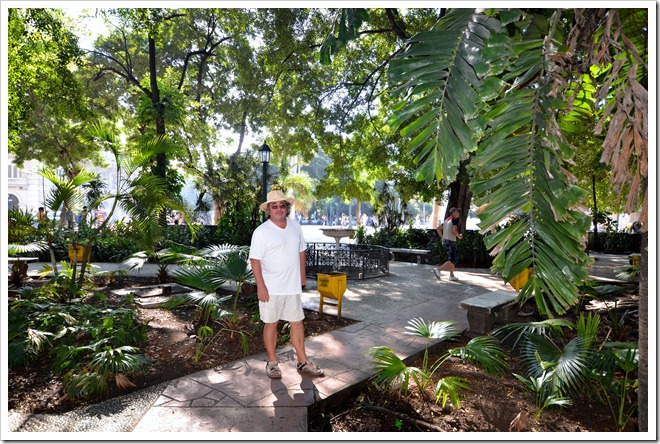Exploring Old Havana

|
Havana started as a collection of wooden huts beside a natural harbour and rapidly grew to the jewel in Europe’s New World crown. In the 16th and 17th centuries, the Havana of the conquistadores was an opulent city that reflected the glories of Spain. The wealth of the sugar trade, built on the backs of African slaves, maintained Havana’s fortunes. With the end of colonial rule it became a wealthy and glitzy city, with casinos controlled by U.S. gangsters, and a playground for the rich. In the years that followed the revolution, the city went into decline and many buildings fell into ruin. There are two parts of Havana: Old Havana, built by the Spanish; and the newer Central Havana built in the 18th century. In 1982 UNESCO declared Old Havana a World Heritage Site and the Cuban government began restoration. Despite, the decay Old Havana still has great character. In contrast, Central Havana, is a more open part of the city, with bigger, public spaces. On our first visit to Old Havana we were initially quite shell shocked at the decay, but on subsequent visits it was clear to see that it was clearly once a city of staggering beauty and renovations were restoring some of that former beauty. It definitely was a city with a somewhat ‘je ne sais quios’ feel about the city, but nevertheless we enjoyed every experience it gave us and glad that every so often my recently learnt (albeit small) Spanish came into use!
Parque Centrale, Havana  The colourful ‘colonial’ type buildings
opposite the park, with streets full of cars and tourists!
We tried to visit El Capitolio, but it was closed due
to restoration. Completed in 1929, it took 5,000 workers over 3 years to
complete and cost $17m. It’s design and name was inspired by the U.S.
capital’s more famous building and it was the seat of government until after the
Cuban Revolution in 1959. It houses the world’s largest indoor
statue of an Amerindian woman representing Cuba. The 24-carat diamond set
below the vast dome is the point from which all distances from Havana are
measured.
El Capitolio 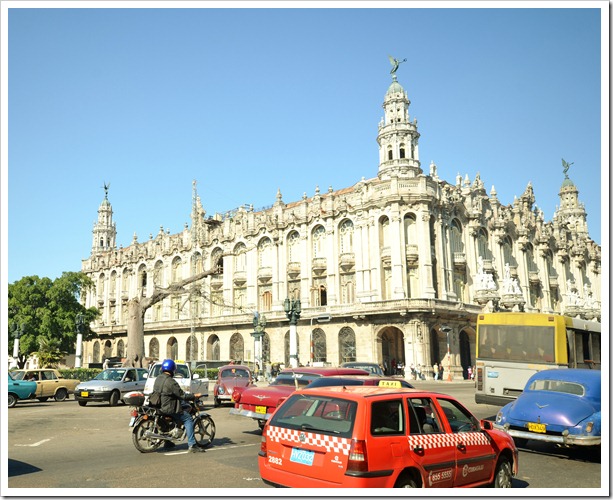 Gran Teatro de la Habana is famous,
particularly for the acclaimed National Ballet of Cuba and claims to be the
oldest theatre in the Americas
Dominating the Plaza de la Catetral in Old Havana is the Catedral de la
Habana. Building of the Cathedral commenced in 1748 and was finally completed in
1777.
The Cathedral’s facade is the finest example of baroque architecture in Cuba and was designed with asymmetrical features – as you can see, one of the towers is wider than the other. This particular feature was conceived in order to allow the water that tended to accumulate on the plaza to freely flow through the streets during the colonial period, when it was built. The Cathedral’s interior is most austere having been stripped of much of its finery.
Cathedral of Old Havana (featuring Steve, Chris & Michael) 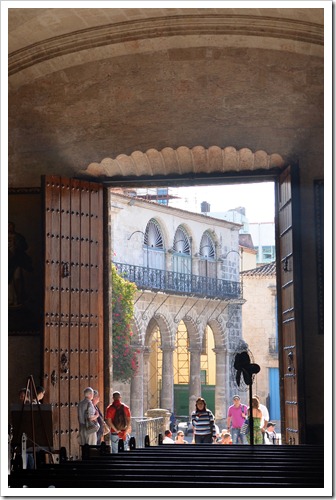 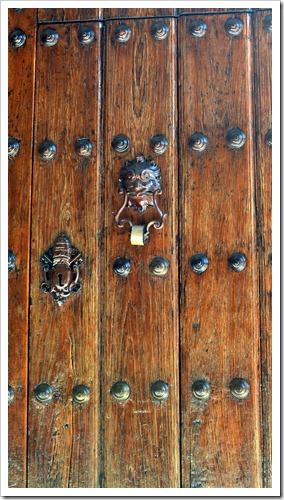 Looking out into the Plaza from inside
the cathedral and a close up of one of the huge wooden
doors
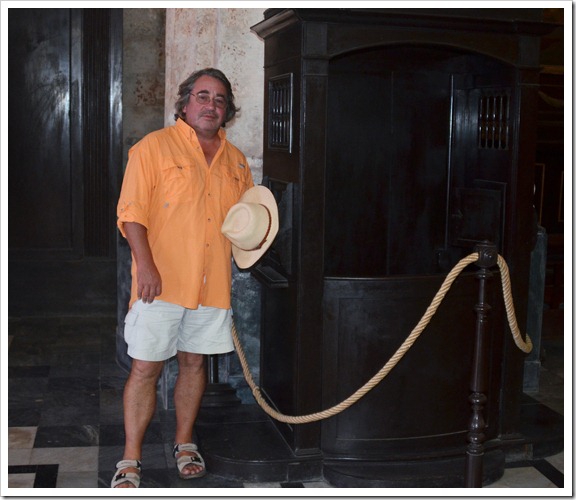 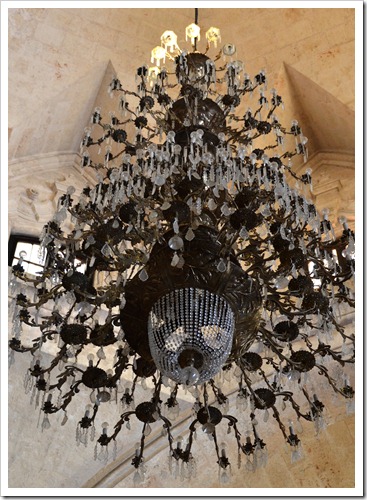 Other ‘objects’ taken from inside the
cathedral (that doesn’t include Michael)
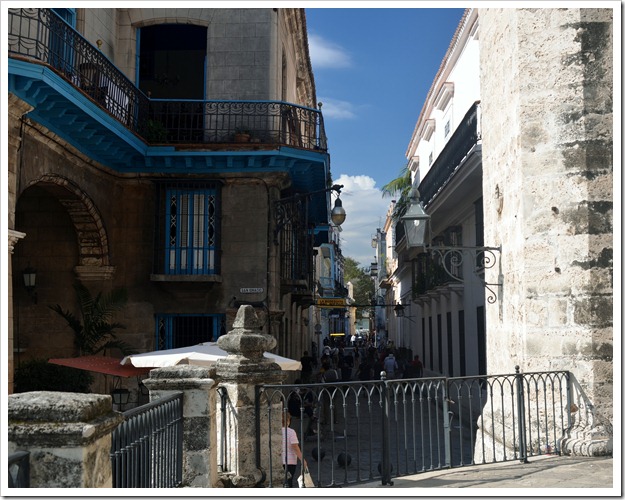  Views taken from outside the Cathedral
and also spotted this Christmas Tree nearby!
We seemed to always end up in The Old Square (Plaza
Vieja), which after receiving a complete
restoration, is a beautiful area to visit. It has a spacious, cobbled
plaza and Cubans still occupy apartment homes on two sides.
Plaza Vieja was the site of executions, processions,
bullfights, and fiestas - all witnessed by Havana's wealthiest citizens,
who looked on from their balconies.
A variety of boutiques and restaurants line the square, which are surrounded by shady columned arcades.
Plaza Vieja 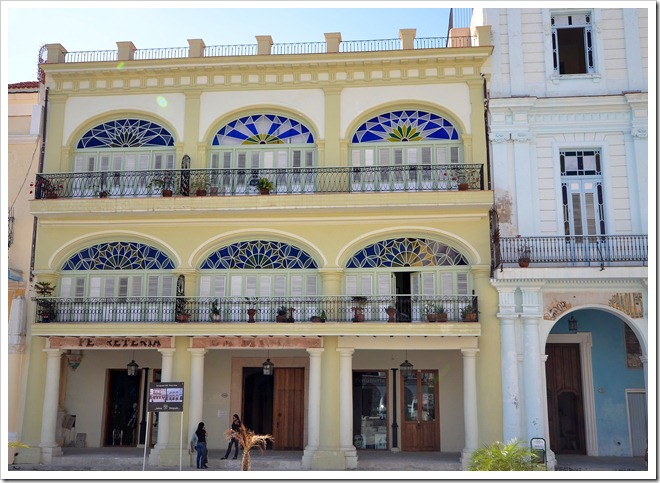 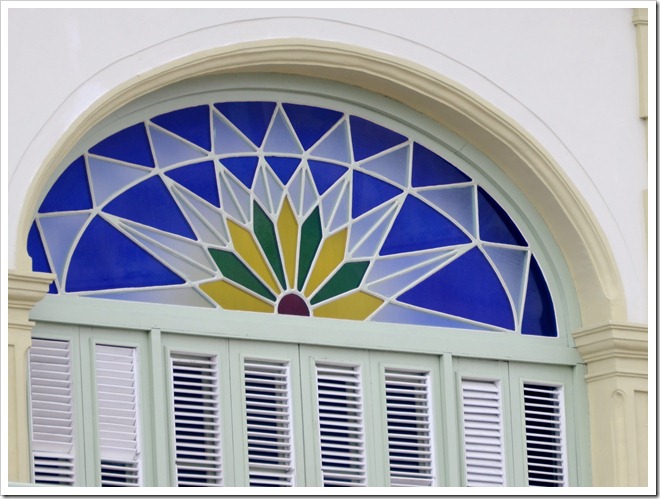 Some of the fabulous art deco windows in
the Plaza Vieja
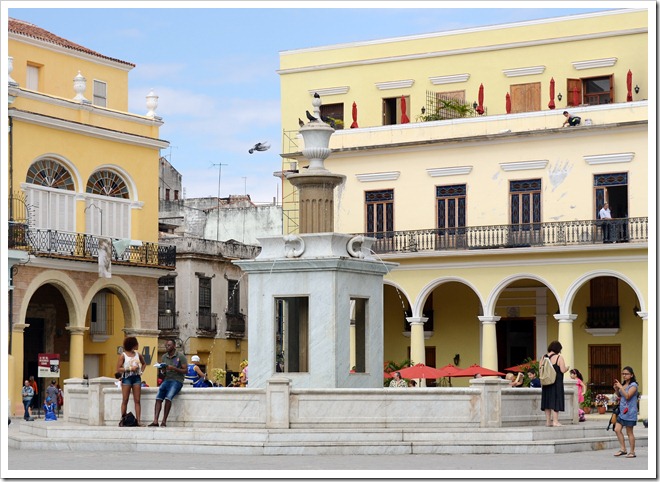 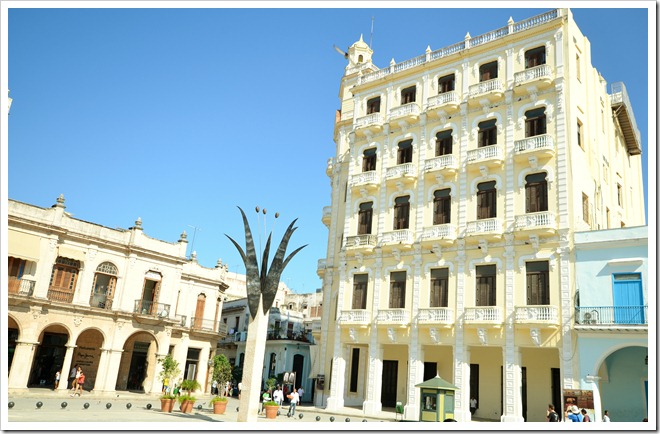 The UNESCO renovated buildings in the
Plaza Vieja
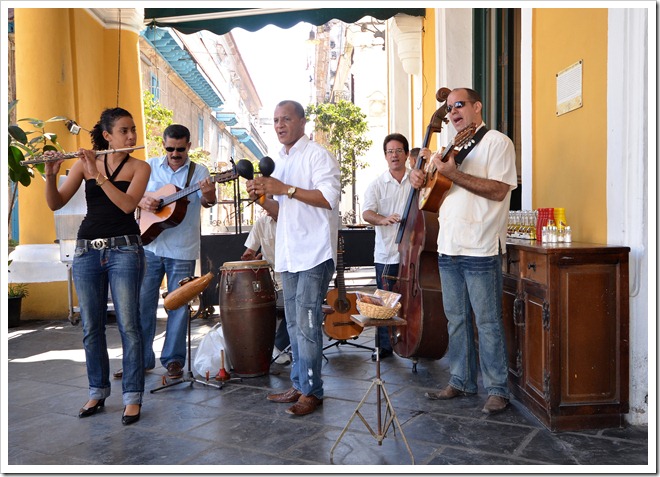 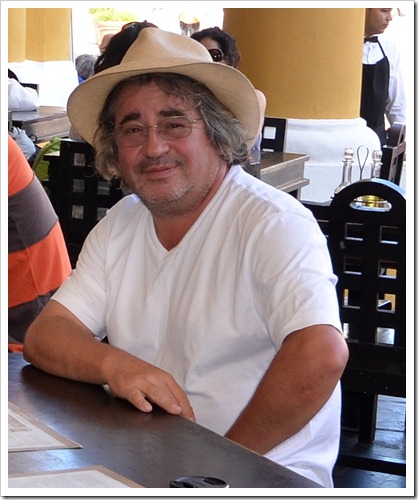 Enjoying the music from the live band
and beer in one of the restaurants/micro brewery in Plaza
Vieja
One of my favourites was the Bacardi building, built in 1929 by the sugar and rum baron Emilio Bacardi and is unique piece of art deco architecture. Decorated with terracotta and (almost) naked nymphs and topped by a giant version of the company’s famous black bat, this is one of the most distinctive buildings in the city.
The Bacardi building taken from the bar on top of the Hotel Plaza. 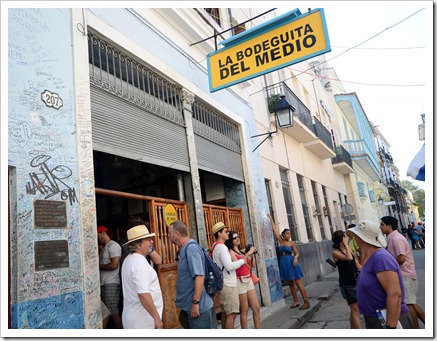 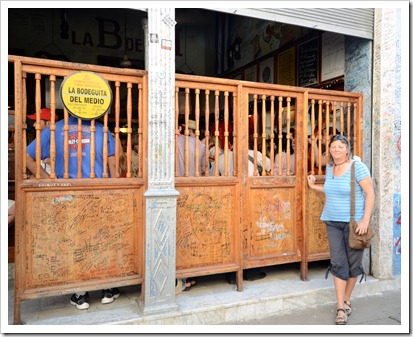 La Bodeguita del Medio is one of Ernest Hemingway’s
favourite bars. Legend has it that the bar started as a grocery store
where writers met at lunchtime. The owner started to serve drinks, then
meals, then opened as a full time bar in 1942. The walls, ceiling and even
the tables are covered in graffiti. The famous names inscribed here
include, Errol Flynn and Castro. Pride of place goes to the famed words of
Hemingway “My mojito in La Bodeguita, my daiquiri in El
Floridita”
|
